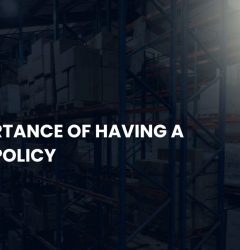14 Dec

Knowing how to optimise eFulfilment inventory levels is a must for you as an eCommerce professional. It can be tricky to get the balance right – you never want your stock levels to drop to zero, but you also don’t want to waste time and resources storing products that aren’t profitable for your business.
Finding the ‘sweet spot’ between too little and too much inventory depends on your ability to assess and make adjustments in line with your market’s fluctuating needs.
This might sound daunting but don’t panic! Read on to discover five handy tips to help you understand and manage your inventory so you can get optimal results.
Tip #1 – Understand Your Production Method
Before you begin to start stocking up your third party logistics shelves (3PL) you need to fully understand your own production methods.
Examine how long it takes for different aspects of your production method to take place.
For example: How long does your manufacturer take to fill an order? How long does it take your 3PL to process new inventory and returns? How long are your customers willing to wait to receive an order?
Once you understand these fundamental aspects of your production you can work on timing your stock ordering to make it extra efficient.
Tip #2: Understand Your Production and eFulfillment Pipeline
Knowing how your eFulfilment pipeline works will help you to assess the levels of stock you need.
Let’s take an example: Simon designs soap and has it manufactured in Cork. He designs different sizes and shapes of soap and sells them from his online store. Once the product is manufactured it’s sent to his fulfilment house in Cookstown.
When Simon puts in an order for more stock it takes his manufacturer 10 weeks to make the soaps and get them sent to the fulfilment house. If in the meantime Simon runs out of his product he runs the risk of alienating current and potential customers who will visit his site, see he is out of stock and happily order from one of his competitors. So Simon has to plan ahead to make accurate predictions of how much stock he will need, and know when to order it.
Tip #3: Use Research to Help You Plan Stock Levels.
Let’s continue with our example. In his first year of business, Simon records which of his products sold well and when they sold well. He notes whether some designs sold better during seasonal times, or certain celebrations (like Christmas or Mother’s Day), and which products sold well all year round. He then uses this data to help him decide which stock to order in the future.
Simon also spent time researching his competition to see what their top products were, and seeing what was popular in his market by checking trends on social media as well as search engine trends.
Tip #4: Look For Patterns in Your Ecommerce Sales
Because Simon kept detailed records from the get go, he was able to create Excel sheets to see what patterns emerged in his sales from year to year. For example, he knew he was generally busy all year round, but sales tended to spike at Christmas.
Therefore, he knew he needed to keep certain product stocked year round but he also knew to bring in extra stock for the increased sales in the lead up to Christmas.
Tip #5: The Backup Plan
It’s really important to understand how much stock you need to cover your general sales, however it’s also important that you have backup or ‘safety stock’ in case of any unforeseen events.
Your safety stock is an amount of stock that you hold that will keep your business making sales if there is a sudden change to your pipeline or demand for your product. For example, a supplier might suddenly have an issue or there could be problems with the manufacturer.
You might also get an unforeseen spike in sales if say something trends on social media that advertises your product.
You can’t account for all eventualities, but having some stock held in reserve in case of emergencies can help to ensure your customers stay happy because you are able to fill their orders.

